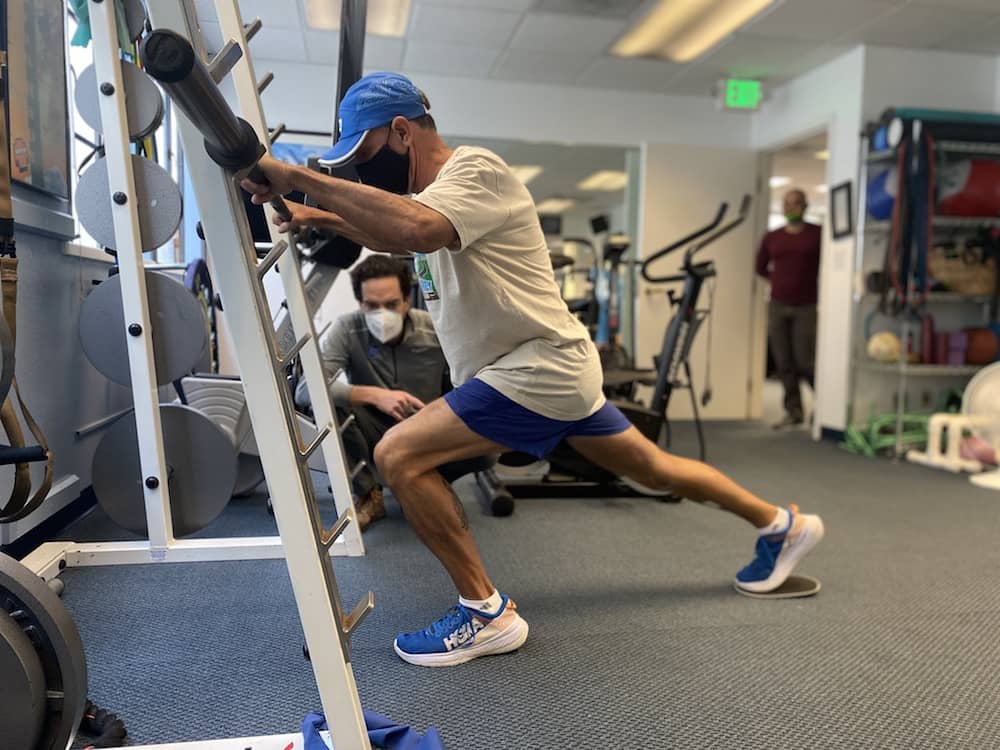How to Have a Good Knee Replacement
Knee replacements have a mixed reputation. Most patients are extremely grateful and thrilled to be free from knee pain. Others do not have such a great experience. And some replacements simply fail.

First of all, it’s important to note that four out of five patients who are told they need a total knee replacement, don’t. Usually, only one part of the knee is worn out, and that part can be replaced with biologic tissues, meniscus and articular cartilage, or resurfaced with a partial knee replacement. Partial knee replacements, when done with robotic control, require far less surgery and (unlike total knee replacements) produce more normal-feeling knees.
If there is bone-on-bone in more than one compartment, total knee replacement may be indicated. To get a great result, follow these key steps:
- Prepare for surgery by meeting with a good physical therapist and fitness trainer. Assess your level of fitness and range of motion, and set goals for your first year of recovery. During the first couple of months, block out at least two hours a day in your daily schedule: one for physio range of motion and swelling reduction and one for fitness training. Start on the first day after surgery. After the initial recovery window, an hour of fitness training a day, 6-7 days a week, should be scheduled.
- Choose a surgeon who is using the latest robotic technology. While many will say they have years of experience and don’t need computers or robots, they are wrong. They can be better surgeons if they permit the quantification that the new technology provides. This technology permits the implants to be placed anatomically, matching the patient’s anatomy, rather than making every knee straight—which is not normal. Importantly, the precision of the robotic arms permits such accurate cuts that bone cement is rarely needed to fix the implant to the tibia. By eliminating bone cement, and using modern components that grow into the bone, the possibility of the implants coming loose due to cement failure is reduced dramatically. Once the bone heals to the components, full sports are permitted. And if the implant's high molecular weight polyethylene insert ever wears out, it can be replaced.
- Find a surgeon with an athletic mindset. If they don’t have an athletic mindset, they will scoff at rehab—and your result will likely be adequate but not exceptional. Set athletic goals and stick to them. In fact, the entire program of pre-planning and daily fitness training with immediate weight-bearing and rehabilitation is the key to outstanding outcomes.
- Have your procedure done at a high-volume outpatient surgery center. There is no reason to expose yourself to a hospital. The outpatient centers are more likely to eliminate the old habits of tourniquets, narcotics, and urinary catheters—all of which can lead to complications.
So make smart choices and hold to your athletic goals. Use your arthritic knee and its replacement as an excuse to become fitter faster and stronger than you have been in years. Looking forward to the “new you” makes the experience much less worrisome and turns it into a positive life event.
Updated & republished January 10, 2021 by Kevin R. Stone, MD with scientific and content updates.
Here's how Dr. Stone performs knee replacement surgery at The Robotic Joint Center
Learn how recent advancements in TKR robotic-assisted surgery technology give Dr. Stone unparalleled accuracy in placing knee replacement implants, allowing for a quicker recovery time, better range of motion, less pain medication, and greater durability for demanding activities.

